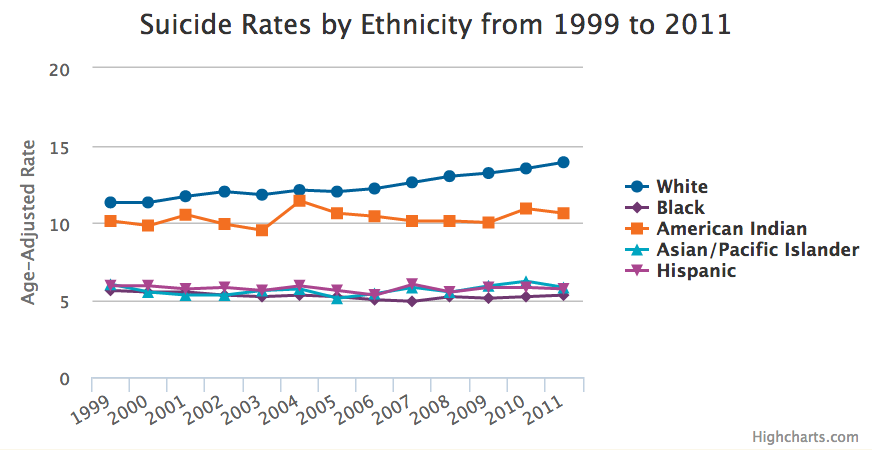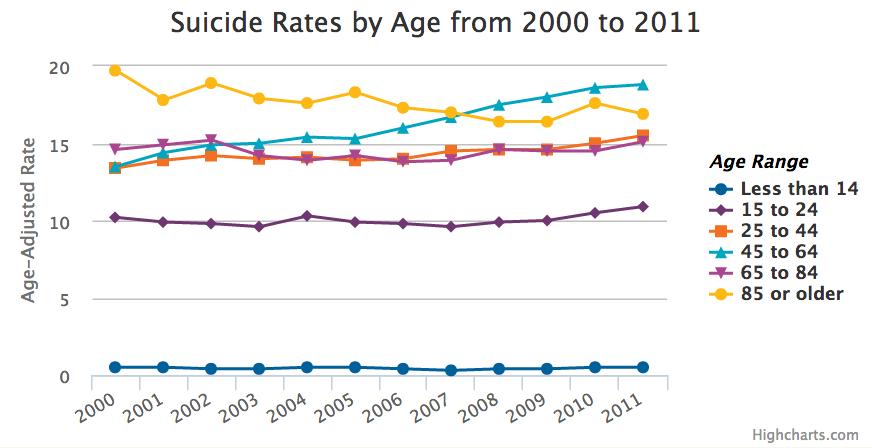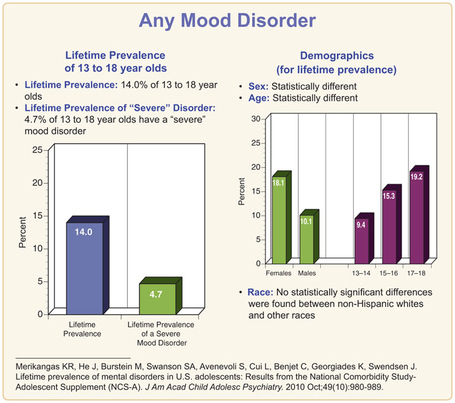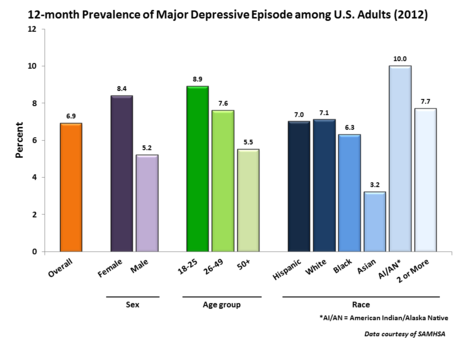10) While men commit suicide more often, women are likelier to attempt it
Between 2008 and 2009, according to the CDC, 3.5 percent of adult males and 3.9 percent of adult females had suicidal thoughts. 1 percent of both men and women made suicide plans, while 0.4 percent of adult men and 0.5 percent of adult women attempted suicide.
Other researchers find an even greater discrepancy between male and female suicide attempts, with the American Association of Suicidology reporting 3 female attempts for each male attempt. And there's a well-established gender gap in depression rates, with significantly more women suffering from it.
This is somewhat surprising in light of the fact that suicide is almost four times more common among men than women in the US:
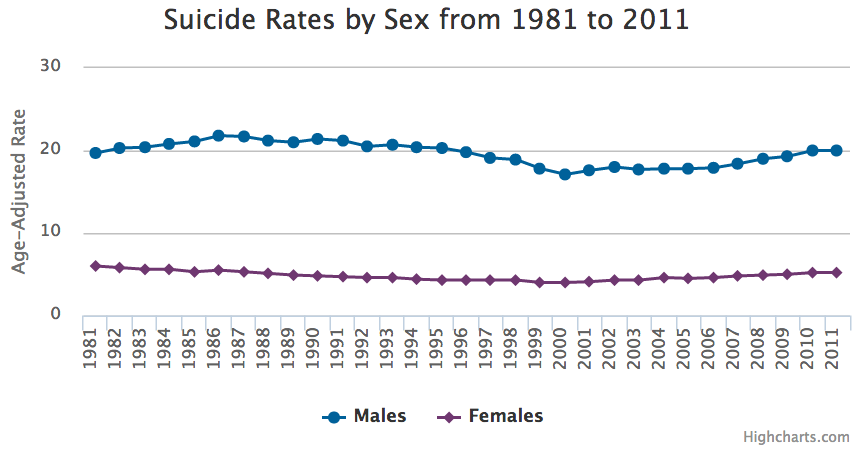
This disparity between suicidal thoughts and behavior and actual suicide rates is known as the "gender paradox" of suicide. At least some of it can be accounted for by the fact that men are more likely to use guns to commit suicide than women, suggesting that part of the differential in suicide rates could be due to women choosing less lethal methods to attempt suicide than men do.
11) Suicides are much more common among LGBT people — especially trans
A recent study from the Williams Institute at UCLA and the American Foundation for Suicide Prevention found that 46 percent of trans men and 42 percent of trans women have attempted suicide at some point in their lives — far greater than the 4.5 percent of the general population who have. The risk of an attempt was greater among trans people of color, of lower incomes, with less education, with a disability, or living with HIV.
Rates of suicide attempts are also elevated among gay, lesbian, bisexual, and queer youth. One meta-analysis in 2011 found that compared to straight youth, LGB youth were 3.18 times more likely to make suicide attempts, 4.17 times more likely to make attempts requiring medical attention, 2.2 times more likely to make suicide plans, and 1.96 times more likely to have suicidal ideation.
12) Suicides are often impulsive, and can be prevented at the last minute
About 90 percent of people who attempt suicide and survive do not die by suicide. One survey found that 87 percent of people who attempt suicide and survive had deliberated for less than a day, 71 percent for less than an hour, and 24 percent for less than five minutes.
In a particularly vivid example of this, Ken Baldwin, who survived a jump off the Golden Gate Bridge, once told the New Yorker's Tad Friend that as he was falling, he "instantly realized that everything in my life that I’d thought was unfixable was totally fixable — except for having just jumped."

